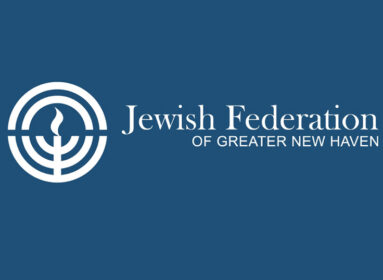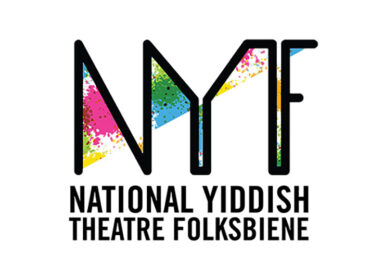
By Shlomo Riskin
The Scroll of Ruth is a tale of “autumnal love” between a widow (Ruth) and a widower (Boaz), within the backdrop of diaspora inter-marriage, conversion to Judaism, and the agricultural life in ancient Israel. We read this scroll on Shavuot, the anniversary of the Torah Revelation at Sinai and the celebration of the first fruits brought to the Temple in Jerusalem. Since Shavuot is the climatic zenith of Passover, the reasons for this special reading are many: Boaz and Ruth are the great–grandparents of David, the Psalm-singing military hero who united the tribes of Israel and first envisioned the Holy Temple in Jerusalem; Ruth is Jew-by-choice whose commitment to Torah Judaism makes her worthy of being the great-grandmother of the prototype of the eventual Messiah-King; and the last three chapters of the story take place between the beginning of the barley harvest (just before Passover) and the end of the wheat harvest (soon after Shavuot).
I would ask three questions about the Scroll of Ruth, the answer to which I believe will provide an extra dimension to our understanding of why we read this scroll on Shavuot, the festival which serves as harbinger to redemption.
First, the first chapter spans the 10 years the family of Naomi is in Moab, and the last three chapters describe the happenings of the three-month period between the barley and wheat harvests. Why did the author give so much text space to such a small span of time?
Second, the midrash (Ruth Rabbah) tells us that Ruth and Naomi arrive in Bethlehem at the precise time of the funeral of Boaz’s wife, and that Boaz died immediately after he impregnated Ruth; that is how the rabbinic Sages account for the fact that Boaz is not mentioned in the last verses of the Scroll (Ruth 4:14-22), which specifically deal with the birth of Oved, son to Boaz and Ruth as well as father to Jesse. Why do the sages see fit to sandwich these joyous verses recounting such a significant love story between two seemingly tragic deaths – without mentioning those deaths?
Third, can we possibly glean from between the lines of the scroll what precisely occurred between Boaz and Ruth during the night they spent together on the threshing floor? What did her mother-in-law Naomi suggest that she do?
If Shavuot is truly the Festival of Redemption – and redemption links humanity to the Eternal God of all eternity – the period that is eternally Sabbath – then the Scroll of Ruth must deal with the eternal rather than the temporal. Israel is the eternal homeland of the Jewish people – and any Diaspora experience can only be temporal at best and destructive at worst. The first chapter opens with a famine in Israel, and an important personage (Elimelekh) who leaves Bethlehem (literally the house of bread) with his wife and sons to seek “greener pastures” in the idolatrous Moab. As happened with Abraham, Diaspora proved far more dangerous (Genesis 12:10-20), the two sons, Mahlon (lit. sickness) and Kilion (lit. destruction) marry Hittite wives – and since the children follow the religion of the mother, the Israelite line of Elimelekh and Naomi – seems to have ended! The father and his sons all die in Moab – their earlier spiritual demise expressing itself physically; fortunately one daughter-in-law clings to her mother-in-law Naomi, converts to Judaism, and returns to Bethlehem. Only now – in Israel – can eternal history begin, and so the next three chapters, and the next three months, are far more significant than the previous 10 years, which had almost destroyed the family line.
The midrash tells us that Boaz’s wife has died just as Naomi and Ruth return – and that Boaz will die three months later. But death in itself is not tragic for Judaism: after all, every individual must die sooner or later. The relevant question is to what extent the individual, when alive, participates in Jewish eternity. Naomi sends Ruth to glean the forgotten grain and harvest the produce in the corner of the field. Divine Providence sent Ruth to Boaz’s field – and Boaz was a kinsman of Elimelekh. Boaz is attracted to and gives her his protection. Naomi understands that participation in Jewish eternity means having a child with Jewish parentage in Israel; she therefore instructs Ruth to annoint herself, dress in special finery, visit the place where Boaz will be spending the night, and lie down at his feet. She also warns Ruth not to reveal who she is (Ruth 3:3,4). In effect, she is suggesting that Ruth tempt Boaz as Tamar had tempted Boaz’s forbear Judah generations earlier – and at least enter Jewish history by bearing his child (see Genesis, chapter 38).
Ruth senses that Boaz loves her. She tells him who she is and asks that he “redeem” her by marriage and by restoring to her Elimelekh’s previously sold homestead in Israel. Ruth understands that true eternity means bearing a child on your own piece of land in Israel, as a respected wife and householder. Boaz complies, and Oved, the grandfather of King David, is born. Ruth’s commitment to Torah – the land of Torah, the laws of Torah, the loving-kindness of Torah, the modesty of Torah – catapults this convert into the center stage of Jewish eternity. Indeed, there is no book more fitting for the Festival of The First Fruits, Torah and Redemption than the Scroll of Ruth.








 Southern New England Jewish Ledger
Southern New England Jewish Ledger









